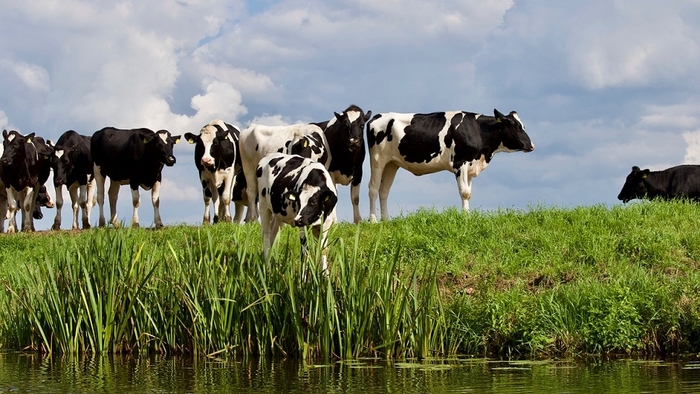Beef farmers should re-evaluate their approach to dairy beef as it provides enormous opportunities to boost production and meet market demands.
According to Robert Drysdale, founder at Straightline Beef at Shepton Mallet, the UK beef market has huge potential for growth – and he has used dairy beef to grow his business from 400 to 4,000 head of cattle in only two years.
Speaking at a recent Crediton Milling Company (CMC) meeting in Devon, Mr Drysdale said current UK beef production stands at 2.5m head a year – 1.9m head of which is prime beef.
This equates to 900,000t of beef. Although 150,000t is exported, the UK is still a net importer bringing in around 400,000t in 2017/18 – taking total domestic demand to 1.1m tonnes. “We produce half a million head fewer beef cattle than what we eat – and global demand is rising – so there’s an opportunity there,” explained Mr Drysdale.
If the industry is serious about increasing beef production, it needs to meet consumer and retailer demands. “We need to work backwards from the target product,” he explained. Farmers need to pay attention to welfare and antibiotic resistance, as well as sustainability, carbon footprint, meat quality, marbling, fat consistency and health benefits.
Beef isn’t sold on taste anywhere in the world, stressed Mr Drysdale. “But I think it will after Brexit – so fat and marbling will be important.” However, UK farmers are poorly paid for a good product, so in future the industry will need to reward consistency in meeting targets such as meat quality and sustainability.
So how does Mr Drysdale’s model work? A qualified veterinary surgeon, he started Straightline Beef in 2014 with all of these market demands in mind. He produces dairy beef across a number of farms – both tenanted and on contract – retaining 100% ownership where possible, and is now killing 200-300 cattle a month.
He uses an integrated cloud system that follows every single animal from birth to slaughter, providing 100% traceability. And he pays for an independent audit every week to ensure farm managers are operating at the highest level.
The business only buys in feed, straw and woodchip, which is used as his fertiliser so no inorganic inputs are needed. Cattle are rotationally grazed and never kept in one field or paddock for more than three days, with the soil and grazing platform regularly monitored.
Efficiency is a top priority and on his tenanted farms housed cattle are fed using a Lely Juno, which has reduced feed waste to less than 1%. That 1% is then recycled into the youngstock diet. “The Juno paid for itself in 10 months and is worth 100g/head/day.” As well as continually monitoring diets, Mr Drysdale has a responsible medical plan and an ongoing assessment of welfare.
There’s also a classroom on farm so that Mr Drysdale can bring in other farmers and traders within the supply chain to show them how the system works and dispel misconceptions they may have.
It’s a system based on continual monitoring and tight control that not only delivers consistent quantity and quality but also provides exactly what the customer wants: Next year Mr Drysdale anticipates killing out 5,500 animals to meet growing demand.
Starting with customer requirements and working back to produce the right product is an approach more farmers should adopt, according to Joe Banks, red meat ruminant specialist at CMC. “This means knowing exactly what is needed from stock, minimising waste and maximising efficiencies.”
This integration of the supply chain allows for control over traceability, production, performance and product quality, said Mr Banks. “I believe Mr Drysdale should be a leading light for the future of the red meat industry in the UK – if not the world.”


